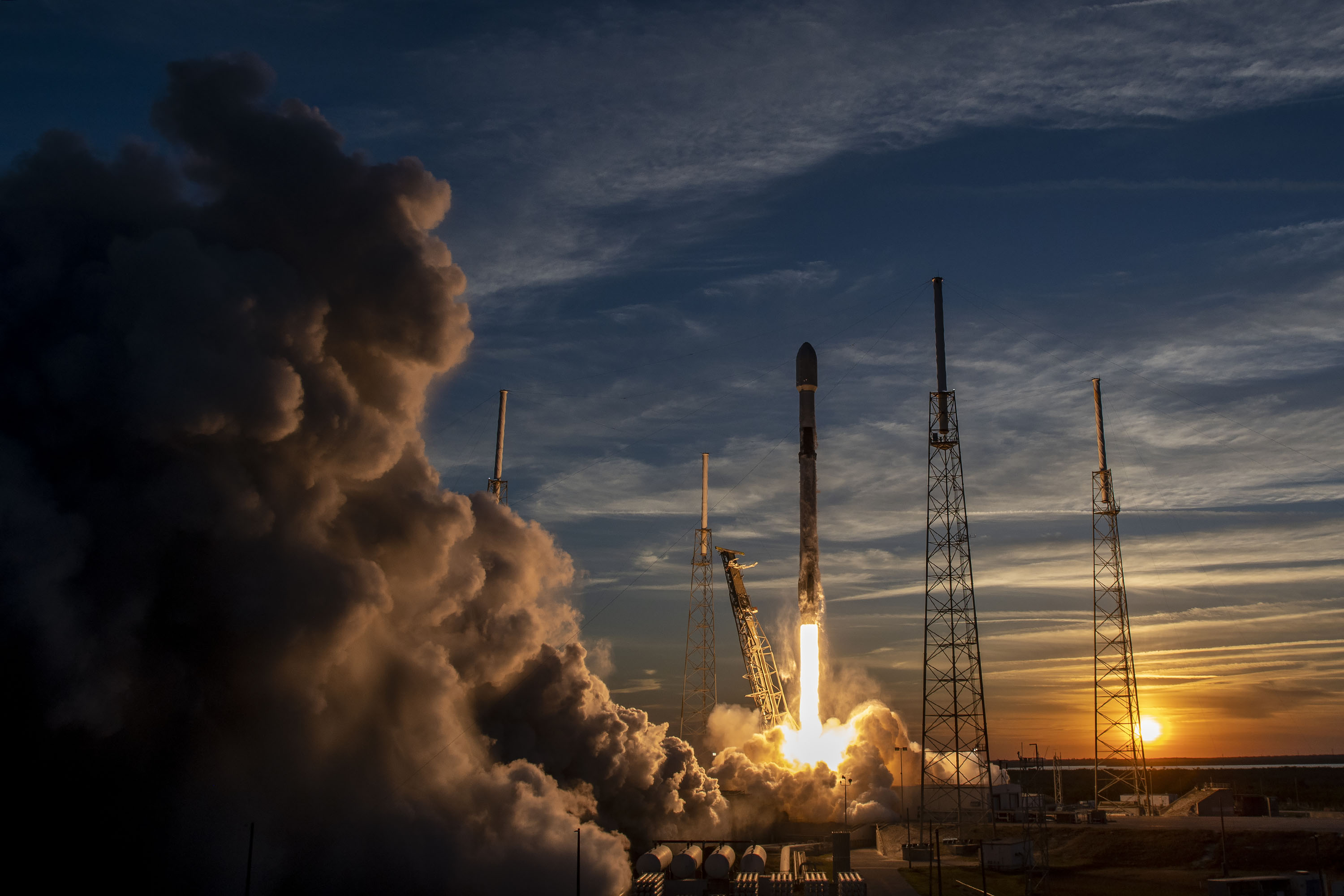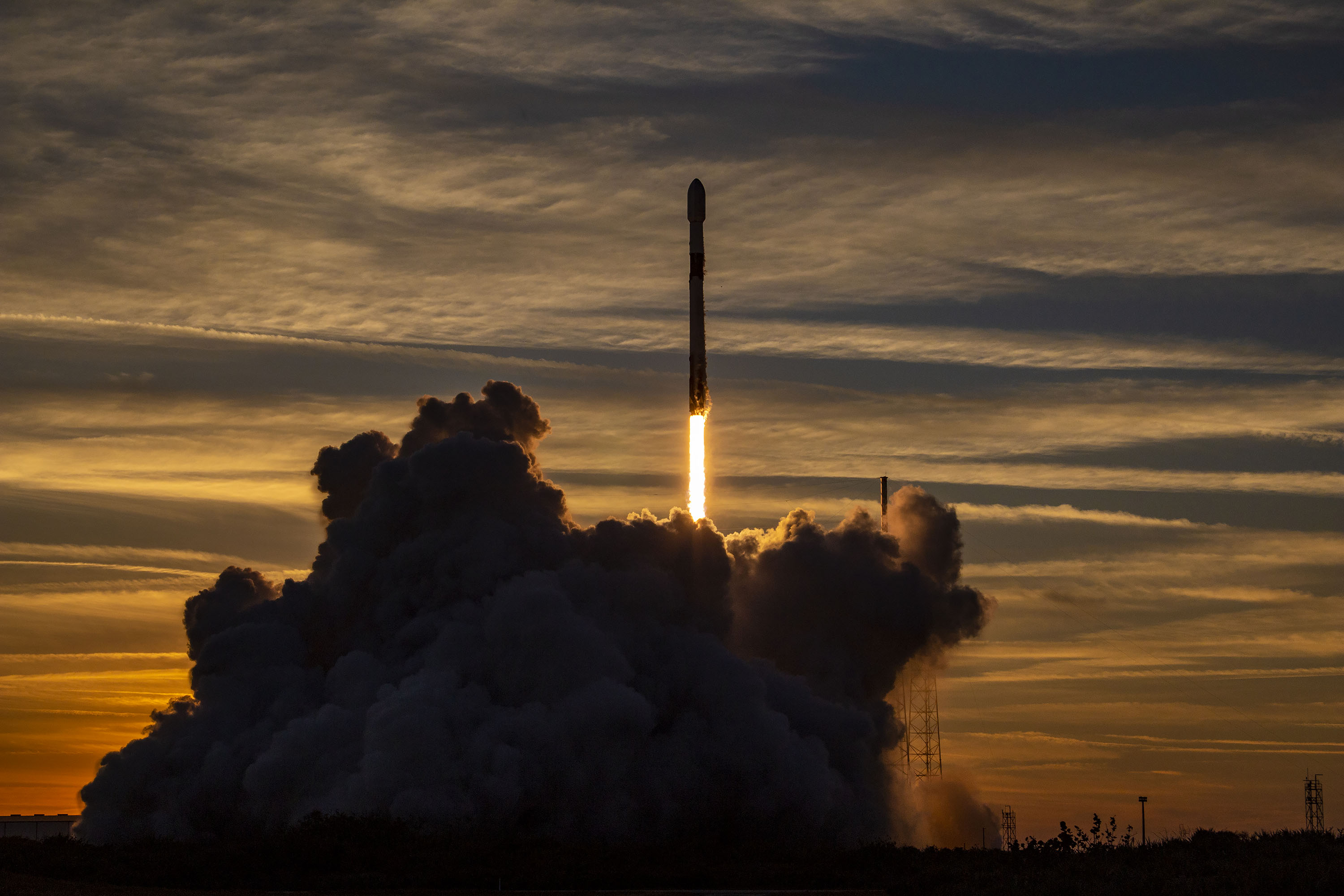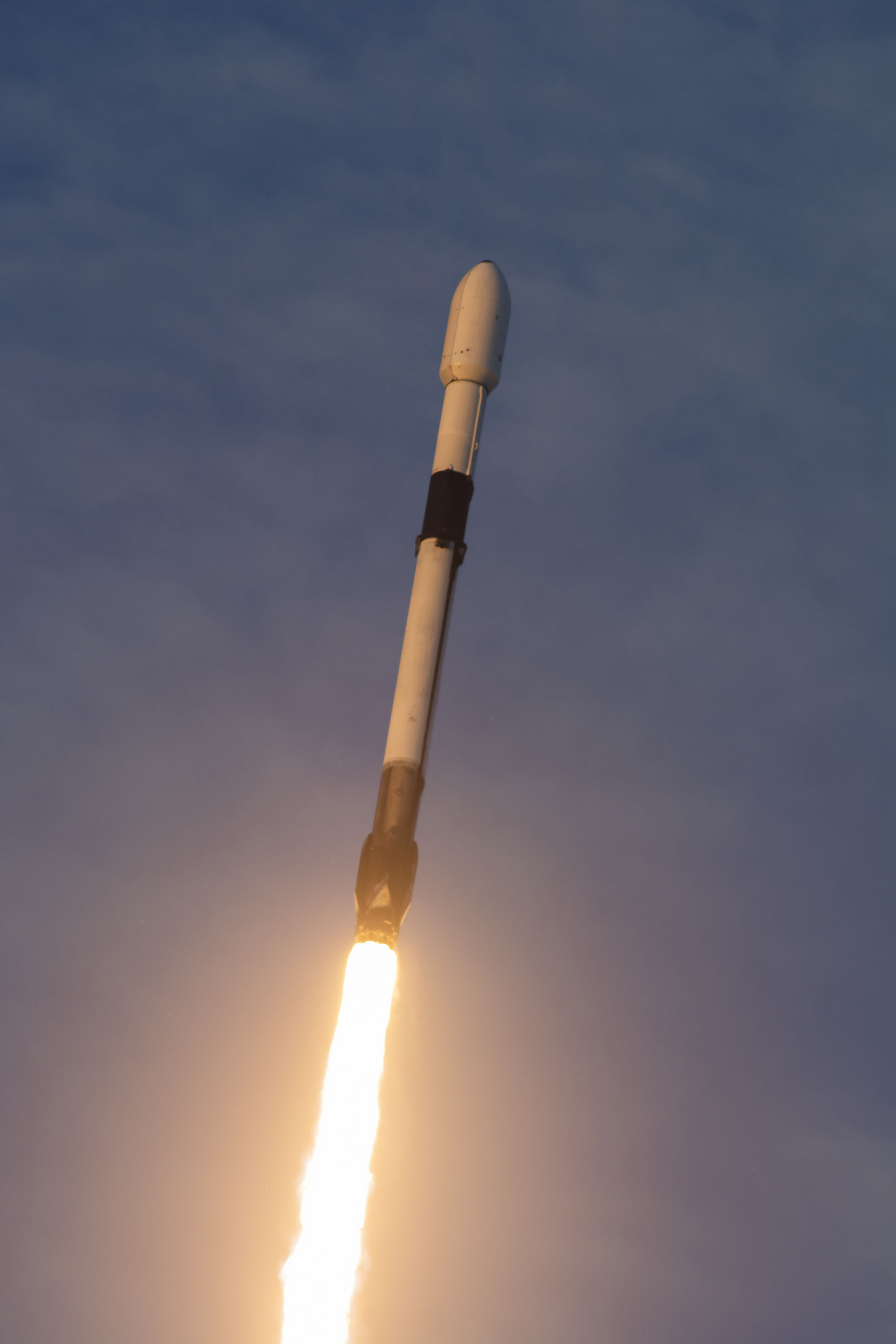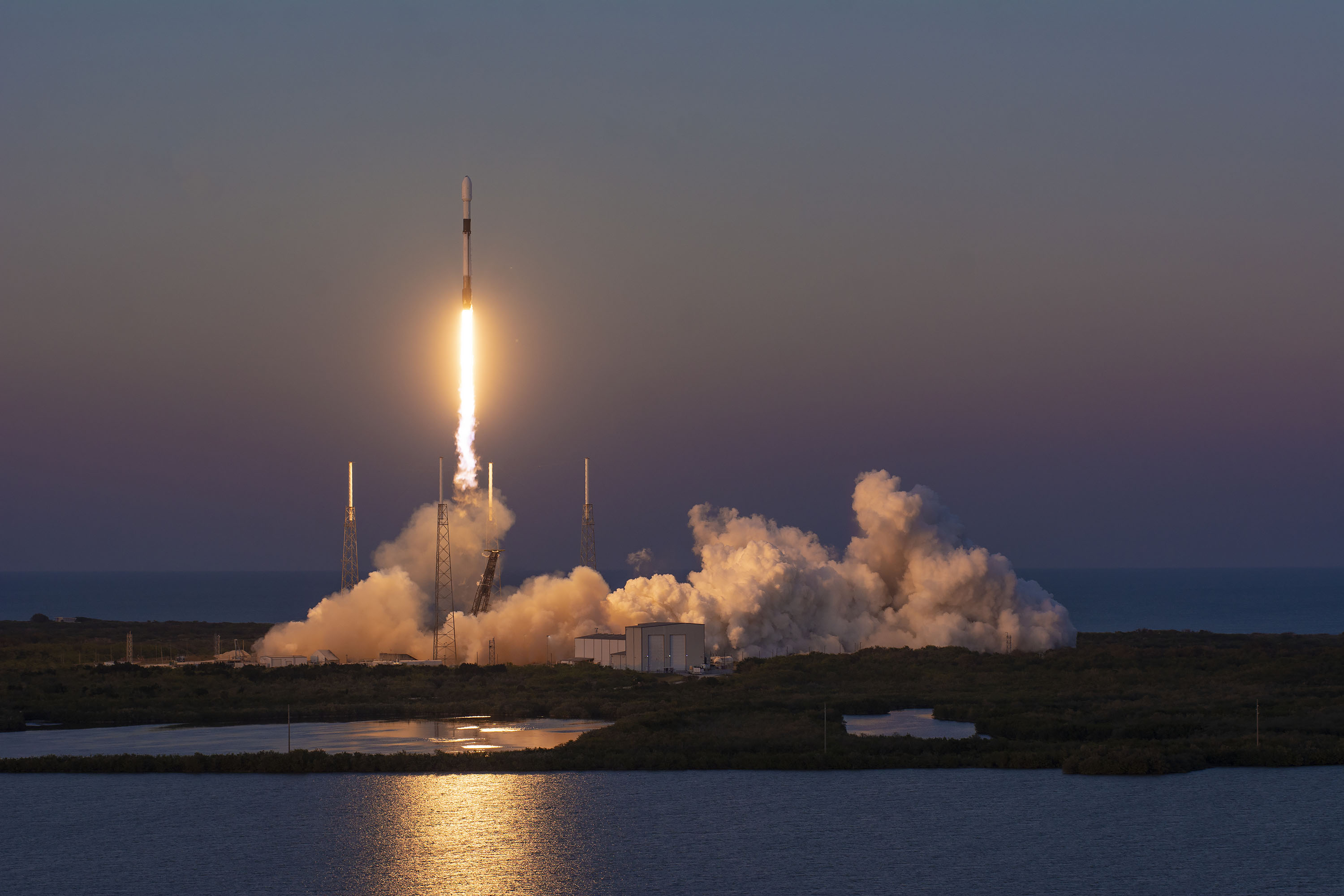SpaceX’s sunset Starlink launch was amazing, and here are the pictures to prove it
Stunning images show a SpaceX Falcon 9 rocket carrying Starlink 'V2 mini' craft as it lifts off framed by the setting sun.

There's something special about sunset launches.
On Monday (Feb. 27), a SpaceX Falcon 9 rocket launched from Cape Canaveral Space Force Station in Florida, carrying the first batch of second-generation Starlink internet satellites to orbit.
The milestone moment, which took place at 6:13 p.m. EST (2313 GMT), was caught in a series of spectacular images, with the Falcon 9 framed against the setting sun.
Related: 10 weird things about SpaceX's Starlink internet satellites

The photos show the Falcon 9 climbing toward orbit, leaving in its wake a massive cloud at its launch position and a white trail in the sky. A few show the launch from the perspective of onlookers, demonstrating how SpaceX liftoffs have become a major spectacle.
The Monday launch had been delayed by five hours as a result of concerns regarding space weather.
About 64.5 minutes after liftoff, the "V2 mini" Starlink spacecraft were successfully deployed, an activity we all got to see, albeit not in real time, thanks to a video tweeted out by SpaceX founder and CEO Elon Musk.
Breaking space news, the latest updates on rocket launches, skywatching events and more!

This batch of V2 minis — so called despite being bigger than their Starlink predecessors — is a test set designed to fit aboard the Falcon 9. Eventually, batches of full-sized V2 Starlink craft will be launched to orbit by the company's Starship deep-space transportation system, which is still in development.
The V2 will improve on the previous generation of Starlink satellites, providing four times the internet capacity, SpaceX has said. This improvement is enabled by the use of more powerful phased array antennas and the use of E-band — radio-frequencies ranging from 60 GHz to 90 GHz.
"This means Starlink can provide more bandwidth with increased reliability and connect millions of more people around the world with high-speed internet," the company said via Twitter on Sunday (Feb. 26).

The finalized V2 units are also expected to be able to directly connect with smartphones.
The V2 minis that launched on Monday also feature new argon Hall thrusters designed by SpaceX engineers that enable them to maneuver very efficiently in orbit. SpaceX added that these thrusters deliver almost 2.5 times the thrust of the first generation of Starlink craft. The deployment aboard the Falcon 9 on Monday was the first time these new thrusters have been used in space, according to SpaceX.
The Falcon 9 that flew Monday is no stranger to space missions; it was the third launch and landing of this first-stage booster. It also lofted 40 of OneWeb's internet satellites to low-Earth orbit on Jan. 11, 2023, and sent SpaceX's robotic CRS-26 cargo mission toward the International Space Station on Nov, 26, 2022.
Follow us on Twitter @Spacedotcom or Facebook.

Robert Lea is a science journalist in the U.K. whose articles have been published in Physics World, New Scientist, Astronomy Magazine, All About Space, Newsweek and ZME Science. He also writes about science communication for Elsevier and the European Journal of Physics. Rob holds a bachelor of science degree in physics and astronomy from the U.K.’s Open University. Follow him on Twitter @sciencef1rst.
